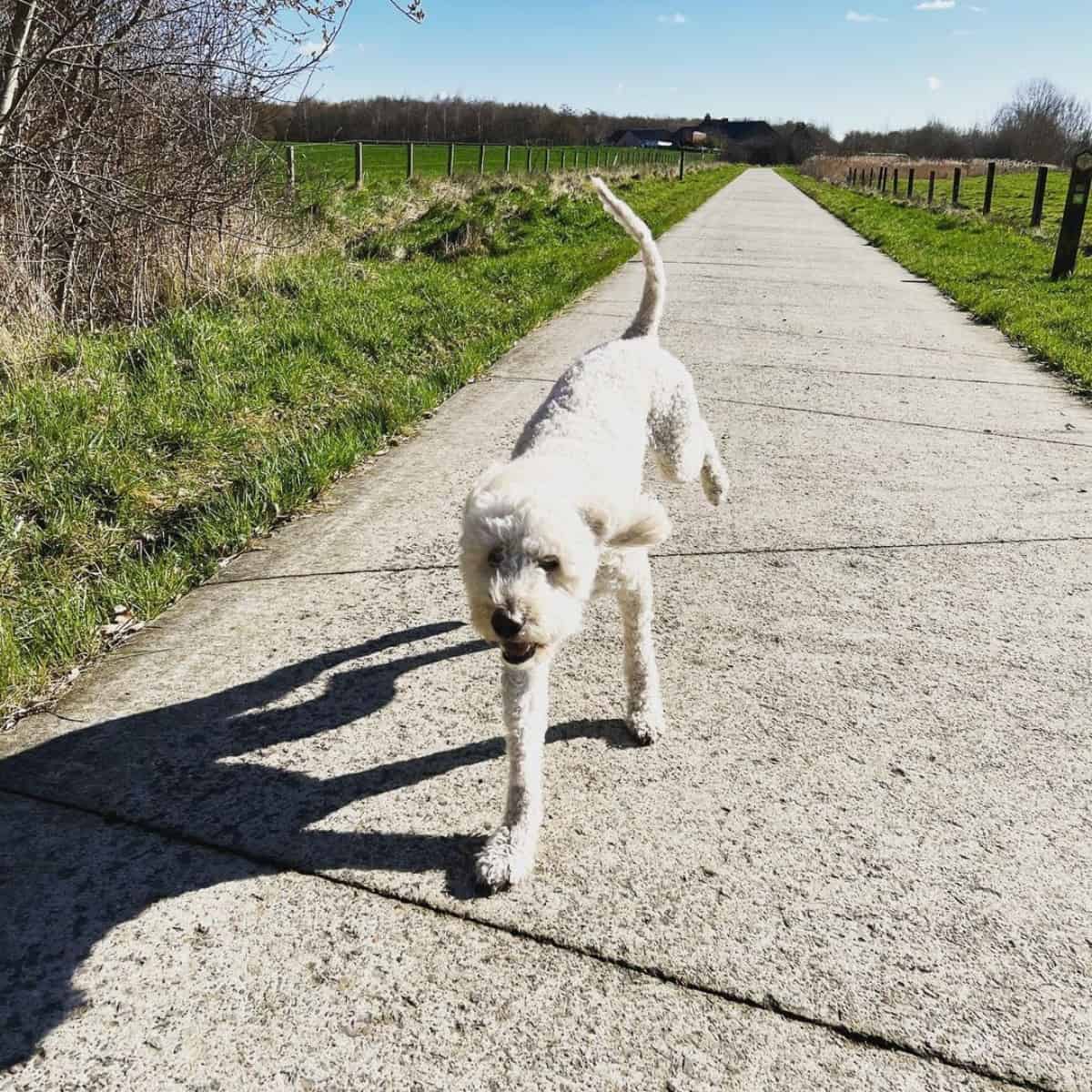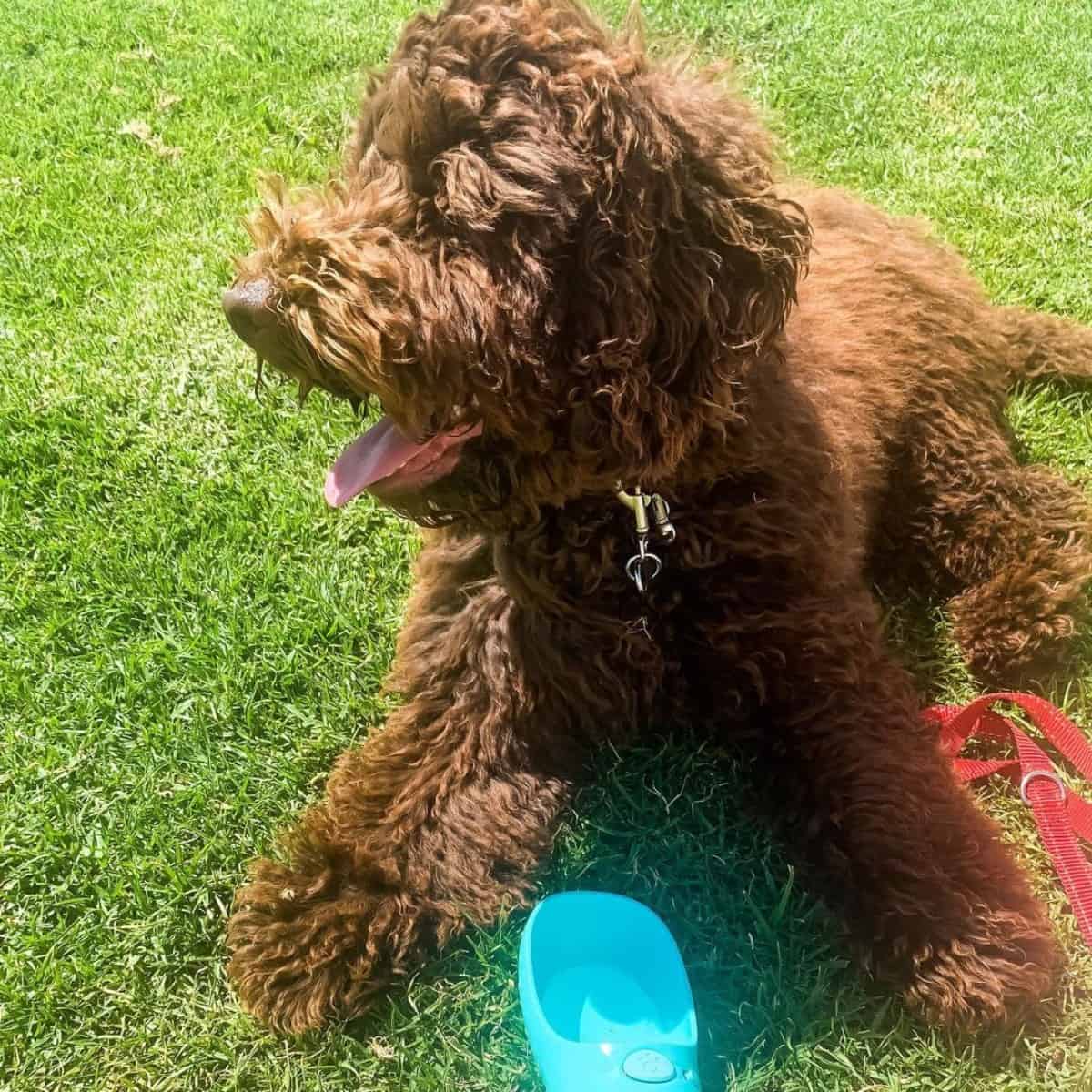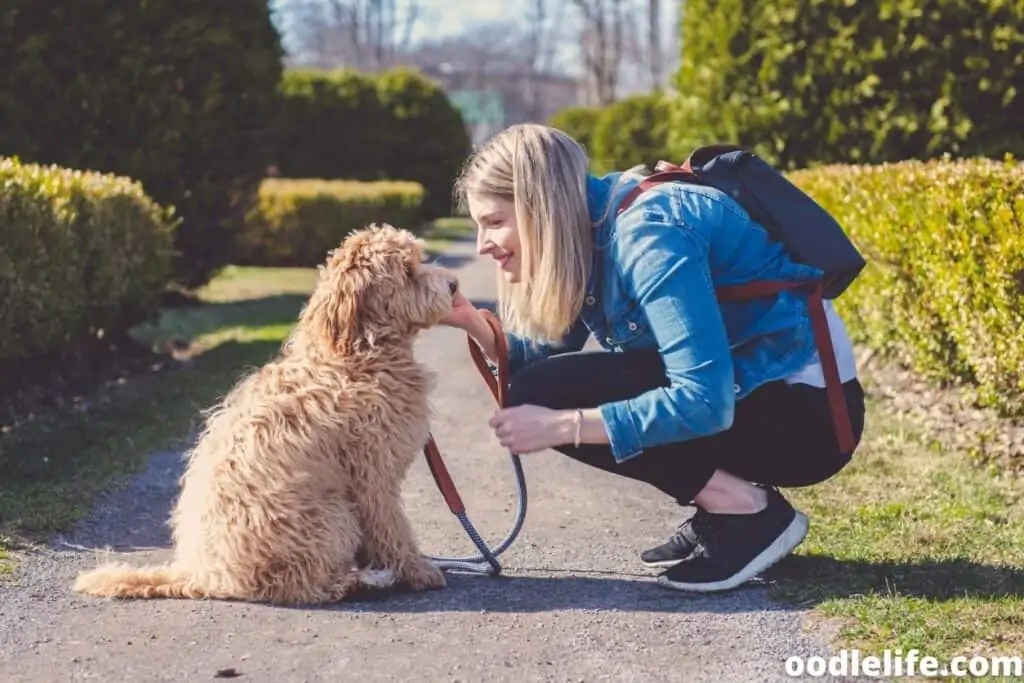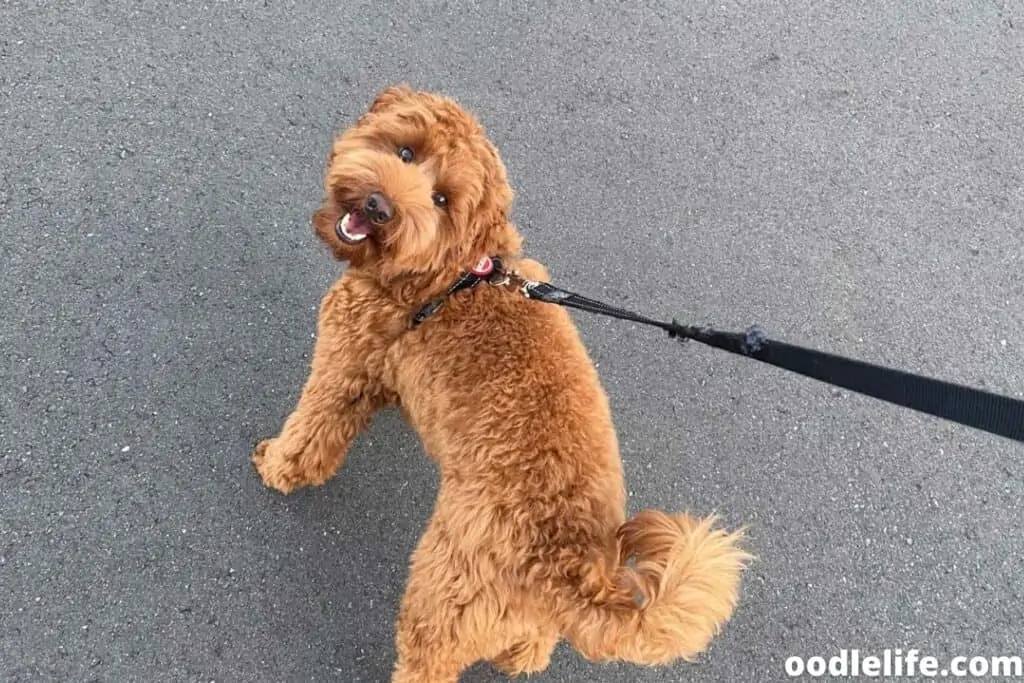Can I Run with a Labradoodle?
Running is always more fun with a partner, but it can be tough to find one that’s always ready to hit the road at a moment’s notice. With the right four-legged friend, though, you’ll always have an eager companion for your cardio.

Much like your human friends, not all pooches are born to run. If you’re the proud owner of a precious pug or beloved bulldog, it’s pretty apparent that these breeds weren’t built for speed.
So, you might be asking yourself, “Can I run with a Labradoodle?” or “Do Labradoodles make good running partners?”
Absolutely!
Before you lace up your sneakers and grab Fido’s favorite leash, here are a few things to keep in mind about running with your Labradoodle:
Are Labradoodles good running partners?

When runners search for the perfect breed to bring along on their excursions, they’ll commonly search for traits like athleticism, high energy, and intelligence.
Labradoodle owners will be delighted to know that their cherished canine checks every box!
Don’t let their status as a “designer dog” fool you– Labradoodles love to run and come from two purebred lines well known for their expertise in hunting.
It can be tough to imagine a toy poodle grappling with a wounded waterfowl, but a standard poodle was bred to go toe-to-toe (or paw-to-webbed foot) with downed ducks, geese, and coots.
Their curly, hypoallergenic coats help protect them from the waters of the marshes and lakes they work in.
At what age can I start taking my Labradoodle on runs?

It might be tempting to take your energetic Labradoodle running during its puppy days, but it’s wise to hold off until it reaches maturity, around 12-18 months of age.
Taking your dog running sooner than that can cause damage to its developing bones and joints, which continue to grow until your standard Labradoodle is at its full size of 50-90 pounds.
But, six months and 40 pounds is a big range for avid runners to pinpoint exactly when it’s okay to take a Labradoodle running.
A trick that’s often used is to weigh the puppy at four months, then double it. This quick calculation will give you an estimate of what their final, mature size will be.
Of course, you should speak to your vet before you start marathon training with your hound. That’s the safest and most accurate way to know if they’re ready.
What distances can a Labradoodle run?

Most dog breeds are better suited for short runs of only a few miles, but Labradoodles stand out as ideal distance runners. They’re excellent trail runners because they easily handle the changes in elevation and terrain without getting tuckered out halfway through the trek.
It will take some time and training, but it’s not unheard of for Labradoodles to happily run 15-20 miles with their owners.
How fast can Labradoodles run?

Because of their size, Labradoodles are capable of impressive speed. They can hit a 35 mile per hour sprint! In general, though, they can maintain a more casual pace of 25 miles per hour, depending on distance and terrain.
Basically, you’ll never beat your bone-loving buddy on foot or by bike, so there’s no need to worry that they won’t be able to keep up with you.
What should I bring when I run with a Labradoodle?

It’s critical to keep your Labradoodle’s safety in mind when heading out for a run, so be prepared with a few necessities:
- Plenty of water for both you and your dog
- Water bowl or water bottle attachment to make it easy for your Labradoodle to stay hydrated
- A hands-free bungee leash that attaches around your waist
- Waste bags for bathroom breaks
- Depending on the time of day you prefer to do your running, a reflective leash, harness, and collar, so your pup is always visible to passersby
- A doggy first aid kit to keep in your car if you plan to run outside of your neighborhood
You should also keep up-to-date with flea and tick protection, especially if you’re planning to run on wooded trails. Just in case, though, pack a tool to remove ticks safely.
How can I safely run with my Labradoodle?

Train, train, and train some more
Labradoodles are a joy to train because they are so eager to please. Couple that with their cleverness, and most owners have no problems with obedience or running training.
Before you focus on running training, though, it’s essential to get the basics down.
As soon as your pup is vaccinated, give them plenty of opportunities to socialize with people and other dogs.
Owners may not have to be too concerned with aggression when it comes to their playful Labradoodles, but overexcitement about a fellow furry friend can be just as dangerous.
A distracted dog who wants to play meet-and-greet can get away from even the most diligent owners, so fundamental commands like sit, stay, and come are critical to the safety of your paw-footed pal.
If you’re concerned that your doggy is in danger of a good-natured escape attempt, try running in areas and at times of day when you can keep distractions to a minimum.
Tune in to the weather channel
Your Labradoodle can’t tell you when it’s getting too hot, so it’s the owner’s responsibility to keep an eye on the temperature.
Avoid temperatures that are too hot or too cold, especially if you plan on going long distances.
For warmer days, your Labradoodle would likely delight in beach or lakeside runs, where they can take a quick dip to cool down.
Beware of certain terrain
Labradoodles will gladly follow their owners anywhere, so you must stick with routes that won’t lead to injury.
Asphalt, for example, can be seriously damaging to your pet’s bones and joints. On hot days, it can also burn their paw pads. As much as possible, stick with grass or well-worn dirt trails, especially for distance running.
Never off-leash until you’ve tried on-leash
Leash laws are serious business, no matter how well-trained your dog is. Before you even consider letting your Labradoodle run off-leash, read through your local requirements.
For areas that do allow off-leash running, be sure to take your dog on a guided run a few times before you give them more freedom. The new sights and smells can be too tempting to ignore.
Giving them time to explore from the safety of their leash helps take some of the “newness” out of the equation.

What should I do for my Labradoodle after a run?
Your Labradoodle can be a running partner for many years, as long as you keep their health in mind. Once your dog starts a running routine, it’s vital to help your Labradoodle adequately hydrate, rest, and recover nutrients.
Hydrate
Whether you’re raising a canine athlete or the laziest pooch on the block, your dog should always have unlimited access to fresh, clean water.
Take enough water to meet AKC guidelines of one ounce of water per pound of weight per day during your excursions. It might seem excessive, but remember that your Labradoodle’s body needs enough H20 to replenish what’s lost through exercise.
Rest
At the end of your run, set aside time to walk at a more casual pace. An after-exercise cooldown gives your Labradoodle’s body time to slowly re-regulate breathing and other bodily functions before they slump down for an afternoon nap.
You should also avoid going full-tilt every day. While daily walks are wonderful, some four-legged running enthusiasts may push themselves too hard even when their muscles or joints are aching.
Recover nutrients
Your fuzzy running buddy is burning up extra calories, so you should adjust their food intake appropriately.
While they may not necessarily need more food, a running dog might require supplemental fats to burn for energy.
The good news is that there are plenty of high-quality kibbles that will meet all of your dog’s daily nutrition needs.
Speak to your vet about specifics for your Labradoodle, but in general, dogs that run long distances multiple times a week require food that contains more than 20% fat.
Is your Labradoodle ready to run?
With the right training program, safety precautions, and regular checkups, your Labradoodle can make the perfect running partner.
Not only do you get the chance to bond in the great outdoors, but you’re also building healthy habits that will keep both of you running for years to come.